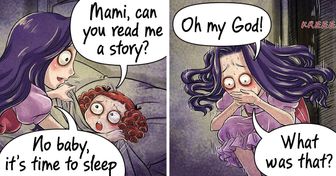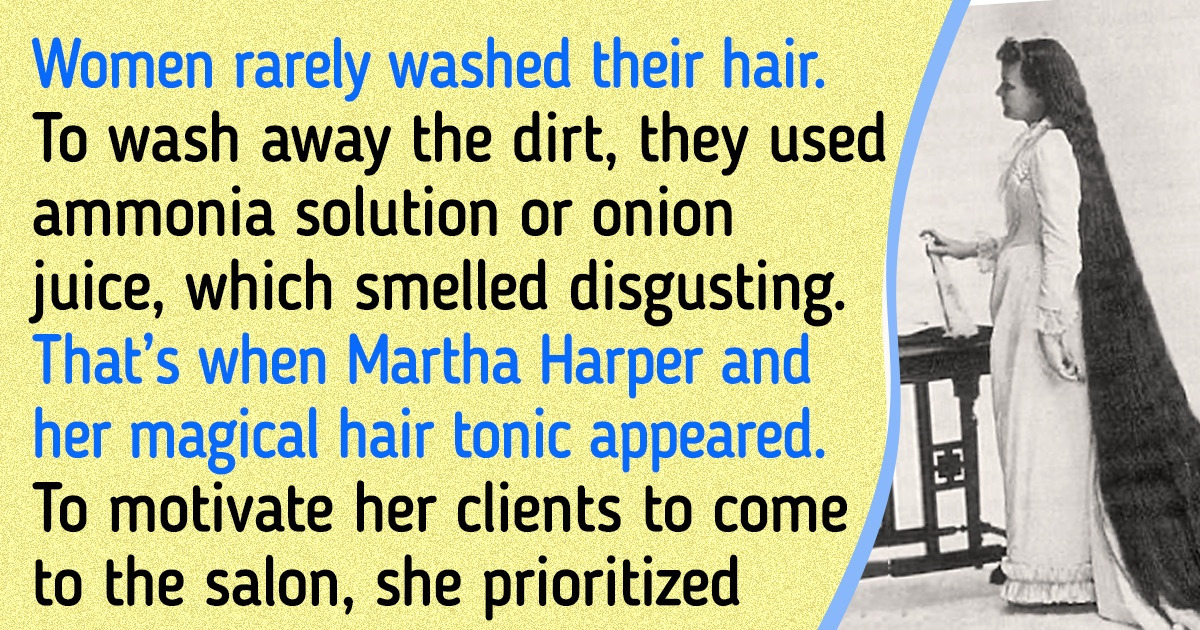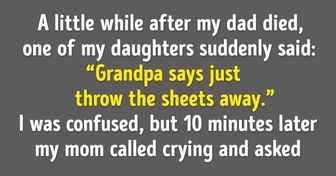A Taiwanese Artist Creates Short Stories With Unexpected Plot Twists


The name Martha Harper is known to very few, but her inventions are still used by many beauty salon visitors. This unique lady made her way from a servant to the owner of a beauty salon chain with over 500 stores. It was Martha who came up with hairdressing salons as they are known today and created a line of hair care products and gave the chance to hundreds of non-wealthy women to start their own businesses.
We at Bright Side learned about the invaluable contribution Martha Harper made to the beauty industry and want to tell our readers about it.
Martha Matilda Harper was born in Canada in 1857. Her family was poor, and her father had to send Martha 60 miles away to work as a servant to their wealthy relatives when the girl was just 7. Instead of learning, playing, and reading books, the things that girls of her age were normally occupied with, young Martha was doing house chores and couldn’t get the necessary education.
She had been working as a servant for 22 years in Canada. First, she worked in the house of her uncle and aunt, then she shifted to work in the house of a German doctor who introduced her to his innovative (for those times) ideas on hair care. It was then that Martha learned about the importance of hygiene and that intense combing stimulates the blood flow to the scalp and speeds up hair growth. Inspired by these discoveries, Martha tried them on her own hair and saw great results. The doctor appreciated Martha’s interest in what he was doing and bequeathed a secret formula for a special hair tonic to the girl.
With small savings and the formula written on a piece of paper, Martha moved to the city of Rochester, where she worked as a servant for another 3 years. She was creating the first batches of her tonic in a shed in the backyard and successfully tested it on herself, her mistress, and her guests. But Martha didn’t want to be a sought-after servant, but a businesswoman. That’s why, after several years of thinking and having saved some money, she dared to start her own business.
In 1888, Martha Matilda Harper invested all her savings in the opening of a beauty salon — which was a mind-blowing $360 for her. The former servant was looking for the right place in the center of Rochester for a long time, very meticulously, and she found it. She hung a full-length photo of herself at the entrance with a bunch of healthy brown hair down to her toes, which was the best advertisement for her business. But there were no clients because a public barbershop was a novelty for most people.
But Martha didn’t give up. To attract her first clients, the smart woman pulled a trick. Martha invited young moms who were feeling bored in the hall of a music school next to her salon, waiting for the end of their kids’ lessons. Ladies would come to the salon to kill time, but after getting to know Martha’s service, they became her regular clients. After this, word of the first public hairdresser salon across the entire city spread.
The public hair salon as a place where any lady could come and get her hair done was an innovation of the late nineteenth century. The fact is that, in those days, hair care (if you can even call it that) was carried out only at home. The culture of hair hygiene simply didn’t exist at that time.
In the Victorian era, women rarely washed their hair, as this process was inconvenient and unpleasant. To wash away the dirt, they usually used an ammonia solution or onion juice, which smelled disgusting. Both methods were dangerous if the product got into the eyes. Normally, it was servants who did all the washing, combing, and hairstyling for their owners. Sometimes owners invited special hairdressers to their homes.
That’s when Martha Harper and her magical hair tonic (which, in fact, was an organic shampoo), as well as a hair salon where one could make up their hair in public, appeared. To motivate her clients to come to the salon, she prioritized the comfort of her clients and named her haircare service “The Harper Method.” Comforting and pleasing clients was something Martha could do very well because of her dozens of years working as a servant.
So what did this method include? This wasn’t just about unique cosmetic products based on natural ingredients, but also a face and scalp massage, a healthy approach to hair care, and the creation of a benevolent and calm atmosphere. The salons were also open in the evening hours, and the employees could look after any children if a client brought them with her — in general, she tried to make the stay at the hairdresser as convenient as possible for the visitors. Martha didn’t use chemical dyes in her salons and didn’t perform any permanent curling because it was damaging to the hair and contradicted the concept of her salon.
The best advertisement for the Harper Method was her own floor-length hair that radiated beauty and health. Respectable clients started to visit the salon and one of them, a socialite named Bertha Palmer, recommended that Martha open a similar salon in Buffalo. After that, the Harper Method conquered Chicago and quite soon, her business grew into a chain present in several counties.
In fact, Martha Harper invented the modern franchise. The owners of salons working by her method were obliged to buy a chair and a sink from her (that she, unfortunately, didn’t patent) as well as all her cosmetic products. Since women usually didn’t have enough money for start-up expenses, Martha would lend them the necessary funds.
Thus, she helped many women to get out of poverty and start their own businesses because all the managers and employees of her first 100 salons were former servants. Over time, she opened a network of beauty schools where she taught women her hair care method. She also started a cosmetics factory. At the peak of the business in the 1920s, Martha Harper’s chain of salons included 500 spots.
Martha Harper not only made a breakthrough in hair care — in fact, she also created a hairdressing salon the way we are used to seeing it today. In an effort to please clients and provide them with maximum comfort during the procedures, Martha Harper invented 2 things that all visitors to beauty salons still use. She designed a washbasin with a semi-circular cutout for washing hair and a reclining chair to rinse hair in the most convenient way without shampoo getting into clients’ eyes. Today, there is no hair salon that can do without these pieces of furniture.
The things that Martha Harper was doing were more than just striving to live decently. She loved her business and tried to improve the life of not only her clients but her employees too. Martha regularly held meetings with the managers of her salons, sent them encouraging newsletters, oftentimes the main message of which was that women could achieve anything they wanted if they believed in themselves and worked hard.
She tried to make the work of her employees as comfortable as possible — she provided them with a flexible working schedule, introduced bonuses for successful work, and introduced the idea of a paid vacation. Her goal was to give poor women more freedom so that they could have control over their lives, never having to depend on anyone.
Martha Harper dedicated almost all her life to developing her business. When she opened her first salon in the thirty-first year of her life, she didn’t have time to think about creating her own family and having any kids — she was busy attracting clients, training personnel, and inventing new hair care products. The businesswoman got married only at the age of 63. Her chosen partner was a 39-year-old officer, Robert A. MacBain.
At the age of 78, she retired and handed over the management of the network of her salons to her husband. After she passed away, Robert sold the business, and over time, the great empire of a brilliant woman disintegrated and turned into an ordinary company.
Perhaps the main mistake Martha Harper made was not developing a succession plan — not only for business, but also for her philosophy. Her spouse couldn’t inspire hundreds of employees with his example the way his wife had been doing for decades. He had nothing to teach them and nowhere to lead them.
Over time, the generic reclining chair appeared in every barbershop, and other natural shampoos and hair care products started to be sold on the market. The uniqueness of the Harper Method went down to zero, but the contribution of this strong woman into the development of female business and the beauty industry is tremendous. Her name and her merits shouldn’t be forgotten.
Have you ever heard of this outstanding woman?











